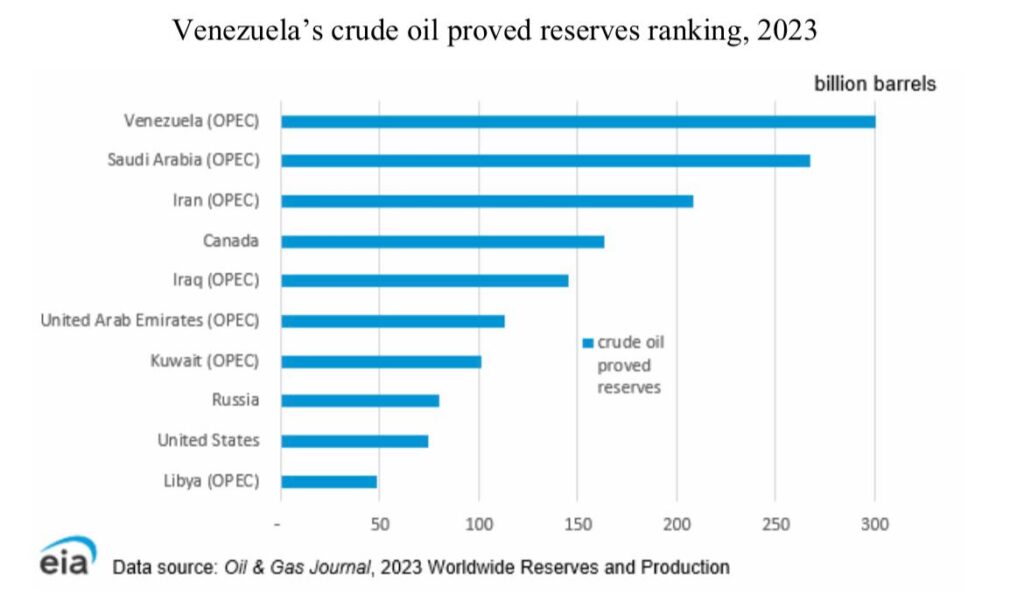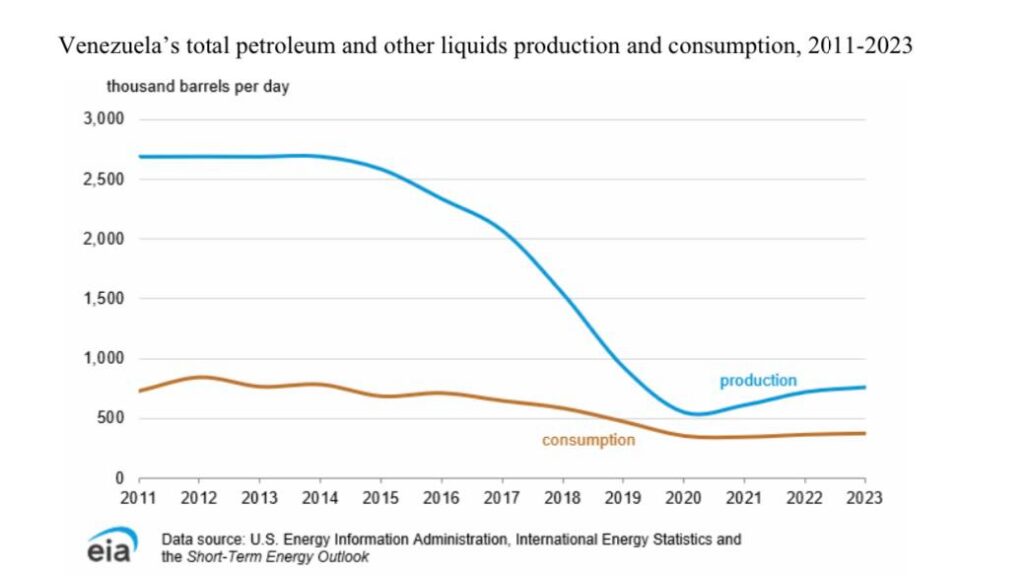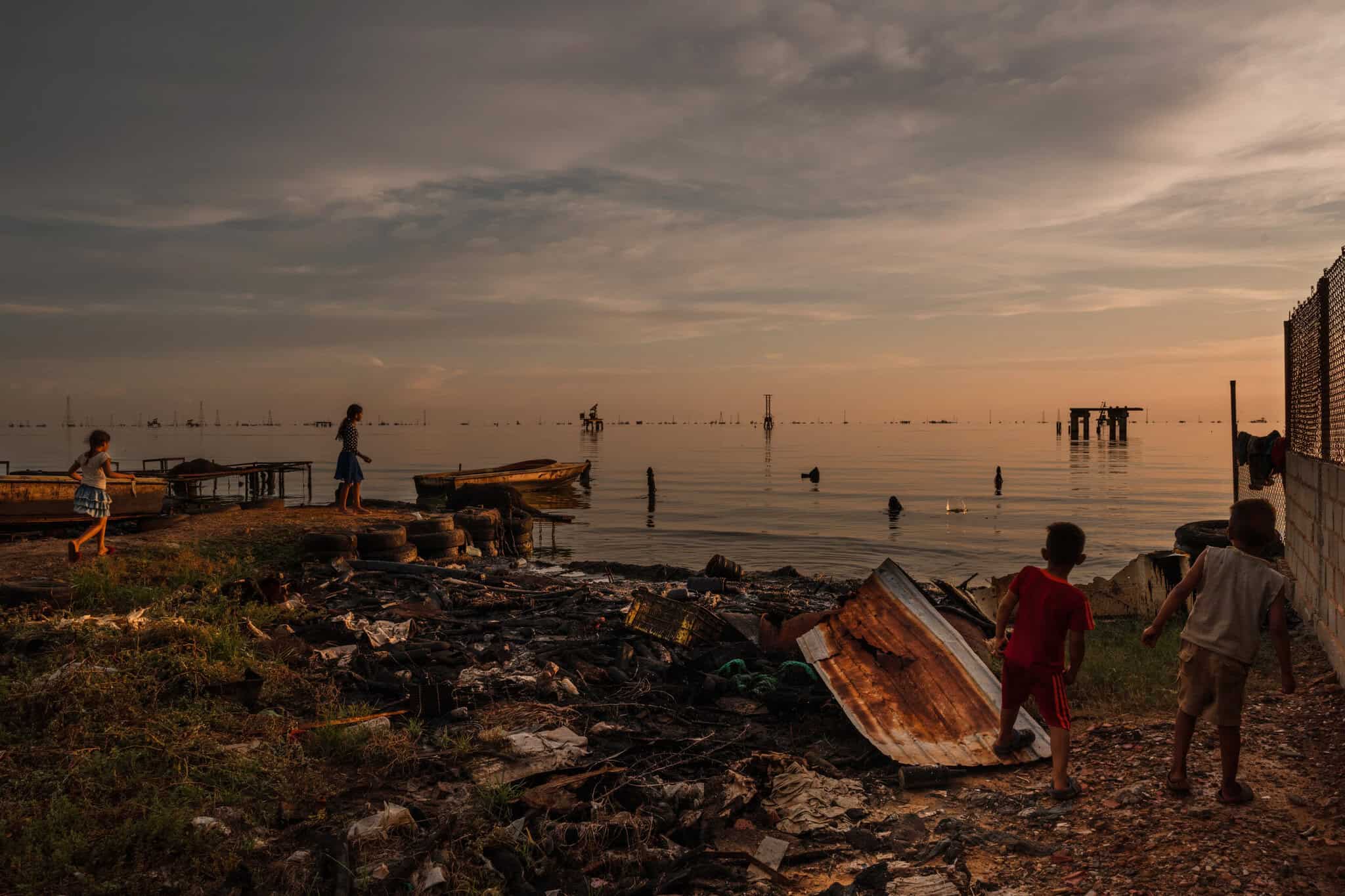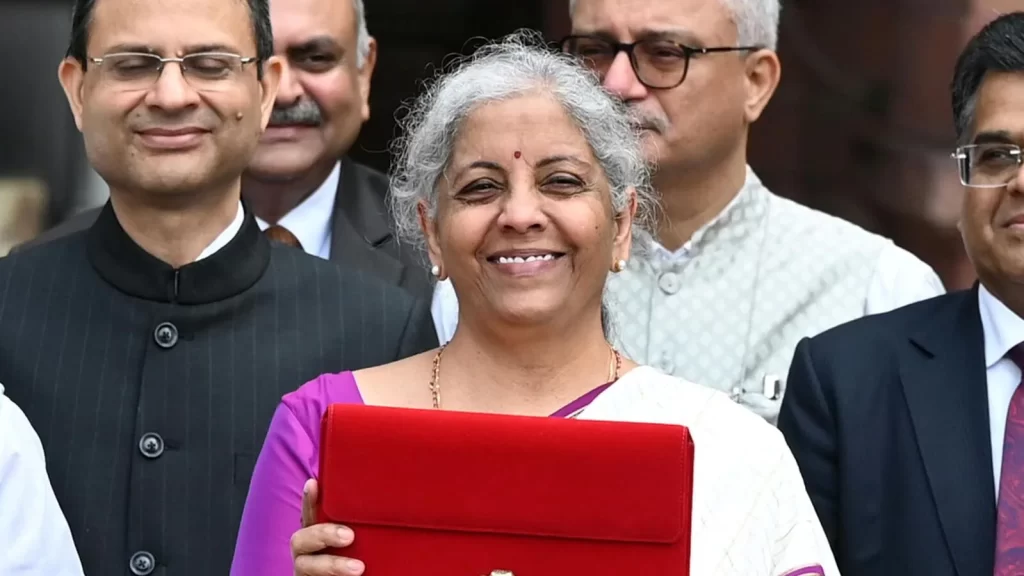A petrostate, or oil state, is a nation whose economy intensely depends on the extraction and export of oil or natural gas. As of 2023, Venezuela had the largest crude oil reserve with around 303 billion barrels, accounting for 17% of the world’s total. In spite of its vast natural resources, Venezuela’s GDP has plummeted, a collapsing currency, and widespread poverty.

Petróleos de Venezuela, S.A. or PDVSA is a state-owned oil and natural gas company in Venezuela, the primary source of revenue for the Venezuelan government. The government imposes a levy of 40% to 45% on the PDVSA’s earnings utilising the revenue to fund various social programs. This has diminished profit reinvestment, causing a decline in petroleum production over the last decade. Additionally, budgetary constraints, a shortage of qualified technical personnel and limited foreign direct investment have all hindered Venezuela’s oil and natural gas development.
In the early 2000s, Venezuela’s oil industry faced a severe setback when nearly 20,000 highly skilled workers were dismissed and the hiring practices started to prioritize government loyalty over technical skills. This decision had more detrimental effects than anticipated.. Most of Venezuela’s oil reserves are composed of extra-heavy crude oil from the Orinoco Belt, which requires technical expertise. While international oil companies possess the required expertise their involvement has been limited by international sanctions.
Venezuela relies on an aging pipeline network to transport oil, with many pipelines estimated to be over 50 years old. This problem is exacerbated by Venezuela’s extra-heavy crude oil. PDVSA estimates that updating pipeline infrastructure alone would require around $8 billion in investment to return oil production level to that of the 1990s.

A major factor contributing to Venezuela’s current state is mismanagement. Successive governments, particularly under Hugo Chávez and Nicolás Maduro, heavilyrelied on oil revenues to fund social programs and government spending, with little effort on diversifying the economy. This overreliance on oil, combined with widespread corruption and failed policies led to hyperinflation, shortage of basic goods, and a collapse in oil production.
Since Hugo Chávez’s electoral victory in 1998, Venezuela has been governed by the United Socialist Party of Venezuela (PSUV) for nearly three decades. Despite this prolonged ‘stable’ political control, the country has suffered significant instability in foreign investment. Widespread nationalizations and corruption have driven away the foreign direct investment (FDI) essential for economic growth. Venezuela’s FDI plummeted to just USD 700 million in 2023, a steep decline from the USD 5 billion it attracted in 1998 when Chávez first took office. Throughout Chávez’s presidency, strategic petroleum reserves dwindled and government debt more than doubled, further exacerbating the country’s economic woes.

In 2023, Venezuela produced 742,000 barrels per day (b/d) of crude oil, a 70% decline from production levels in 2013. However, after a decade of decline, Venezuela’s crude oil production increased by 13% in 2021 and 18% in 2022. This turnaround can be attributed to a few factors including assistance from Iran (as a result of a 20-year cooperation deal) in shipments of diluents required for transporting and processing the extra-heavy crude oil, and technical assistance from China National Petroleum Corporation (CNPC).
Although this will lead to growth in production it may create a dependency problem that can do more harm than good. Another reason for this increase in production is the eased sanctions by the US, and the potential increase in oil exports to Europe, China, and Cuba among others is expected to boost the government finances and finance a major portion of its budget.
On a positive note, some local oil field service providers have resumed operations, as a courtesy of PDVSA settling a portion of its debt. This may help in boosting production levels. However, several other challenges haunt the economy. Hyperinflation hit a staggering 189.8% in 2023, according to the Central Bank. The infrastructure is collapsing across the country with frequent power outages, deteriorating transportation systems, and unreliable access to clean water. Additionally, as of January 2023, the International Rescue Committee estimated that at least 12.3 million Venezuelans continue to remain food insecure
Widespread poverty, food insecurity and failing infrastructure are driving a significant brain drain from Venezuela. According to Venezuela’s Regional Inter-Agency Coordination Platform for Refugees and Migrants, migrants from Venezuela seeking refugee status in neighbouring Latin American countries totalled 7.7 million as of August 2023. Despite having a young population, with 91.3% below the age of 64 years as of 2022, the country is unable to reap the benefits due to its citizens migrating as a result of the political and economic turmoil.
The recent election uncertainty is likely to exacerbate Venezuela’s existing challenges. Without significant change, the future of the Venezuelan economy seems as uncertain as its election results. Analysts predict that a global shift from fossil fuel energy to renewables such as solar and wind will force petrostates to diversify their economies. For Venezuela, this shift presents a significant challenge, as it will require enormous investment, advanced infrastructure, and updated technology– all areas where the country has historically struggled.
Written by Maitri D
Edited by Mabbu Gangotri Devi Sri




